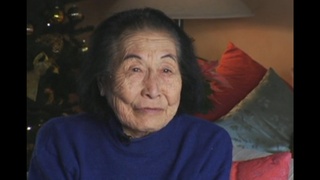Interviews
Performing the koto and taiko drum together, in Japan
In Japan, it was very, very rare to see live music [in the early ‘80s], especially to see a koto and to see a taiko and to see Japanese American taiko because I took my taiko back to Japan. She took her koto back to Japan. For me, to take my Japanese American taiko was saying something.
The first gig that we did was in a club. So these people from Japan came up to us and said, “Thank you for playing at this club because we had never seen a taiko and koto in person before in our life.” And here they are from the land of kotos and taikos. So we go, “Wow, what are they talking about? You got them all over the place, don’t you?” And they go, “No.” Naturally, Japanese press also asked us the same question. “Why do you want to put these Japanese instruments in this band? Why do you want to do this?” We explained the whole issue of “This is what we grew up listening to.” This was, subconsciously, what I grew up listening to, going to grandma’s house and listening to taiko or just all these Japanese enka music, folk music and all this other kind of music. So for us to do this not necessarily was natural, but we felt very, very important in our lives to be able to communicate this with people in the United States. So they thought that was really interesting. “Why do you want to put these traditional Japanese instruments into the band?”
So we had this long discussion before we went to Japan. So that was a very, very important thing for us to feel very confident about us taking this instrument to Japan. And then to bring it from Japan back over to the United States, you felt a lot, very, very strong to be able to do that. So it worked many, many different ways. It was a very, very important trip that we went to Japan for this band.
Date: October 15, 2004
Location: California, US
Interviewer: Art Hansen, Sojin Kim
Contributed by: Watase Media Arts Center, Japanese American National Museum




